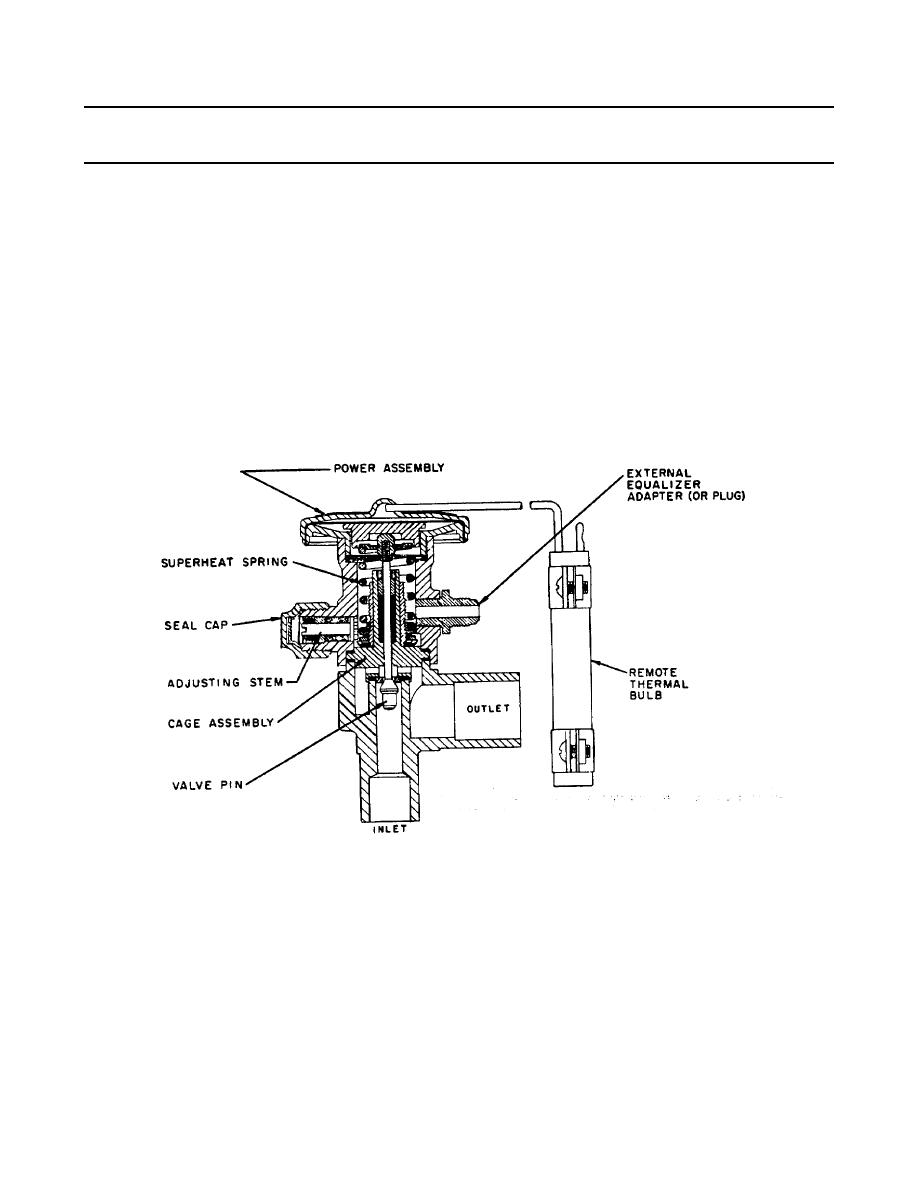
| Tweet |

Custom Search
|
|

|
||
 TM 55-1905-220-14-8
4-29. AIR CONDITIONING SYSTEM - MAINTENANCE INSTRUCTIONS (Continued).
(b) As the refrigerant flows through the evaporator, the liquid boils off into a vapor. The amount
of liquid decreases until it reaches the last passes of the evaporator where it will have evaporated completely
due to the absorption of a quantity of heat from the surrounding medium equal to the latent heat of vaporization
of the refrigerant. The refrigerant suction gas continues to flow through the evaporator and remains at the
same pressure, but its temperature increases due to the continued absorption of heat from the surrounding
medium. By the time the suction gas reaches the end of the evaporator, it is superheated. The amount of
superheat depends on the amount of refrigerant being fed to the evaporator and the load imposed on the
evaporator.
(c) The thermal expansion valve is operated by the pressure differential between: (a) the
combined suction pressure in the evaporator and the valve superheat spring pressure; and (b) the vapor
pressure in the remote thermal bulb (connected to the valve power assembly and attached to the suction line at
the point it leaves the evaporator). Since the pressure in the thermal bulb and power assembly is function of
the suction gas temperature, the operation of the valve is controlled by changes in suction gas superheat.
Thermal Expansion Valve
4-884
|
||
 |
||